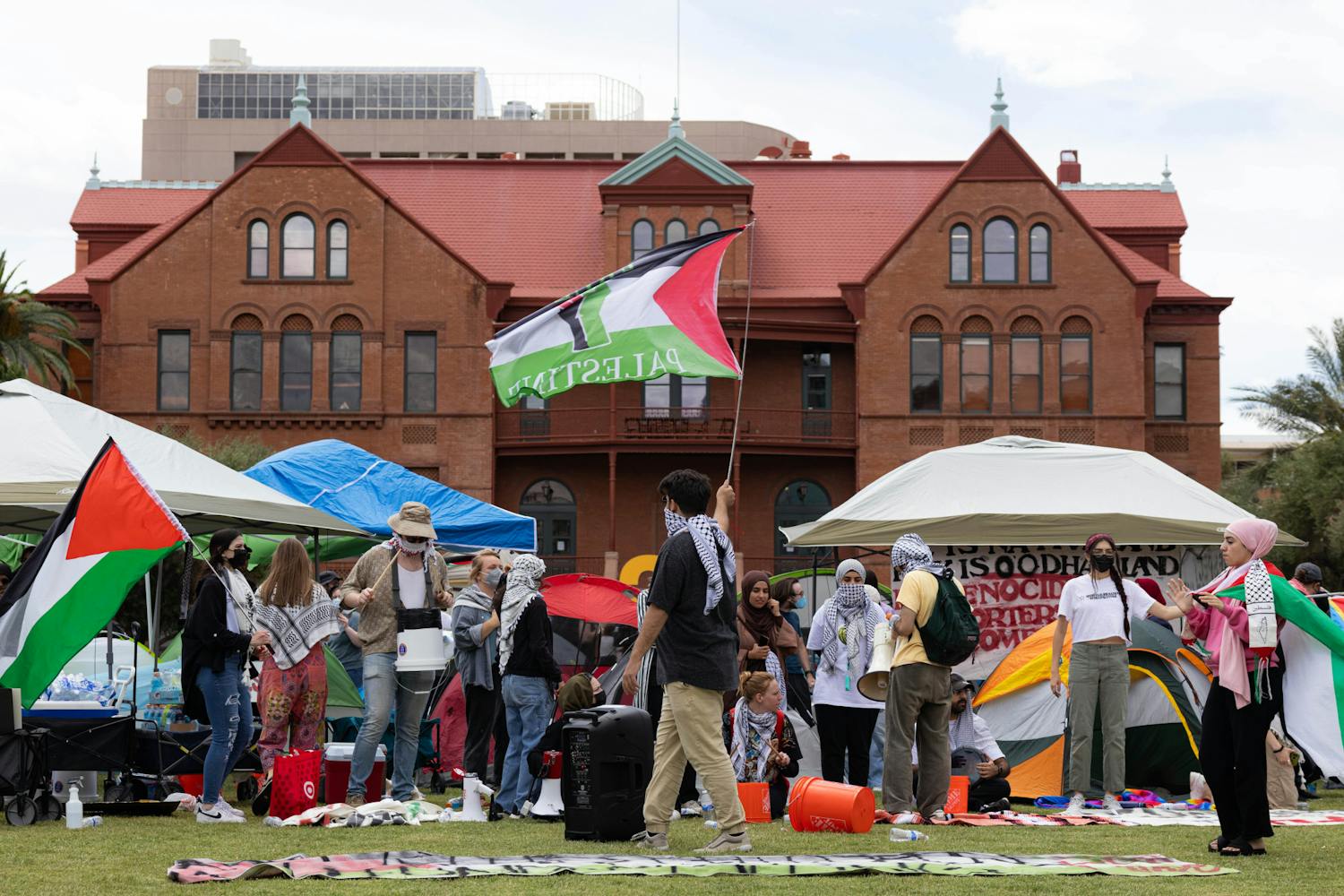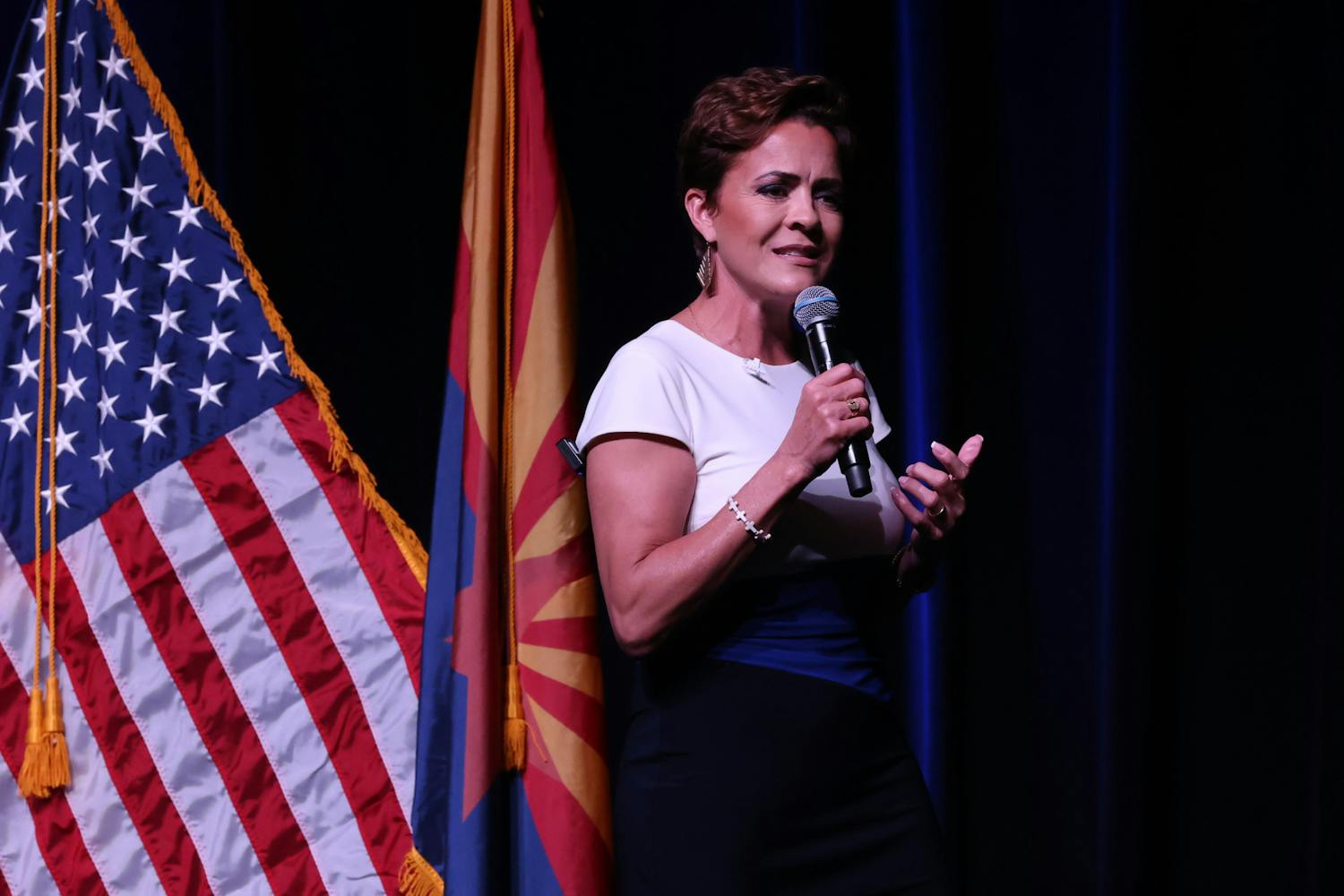Living on the street has become a way of life for Vietnam veteran Jerry Koppel.
The 54-year-old New York native, who has lived in Phoenix for a dozen years but has been homeless for nearly 20, is one of thousands of Arizonans without a place to call home.
“I’m pretty much a loner,” Koppel says. “I have to make money [to get off the streets], but I mean, minimum wage is seven and a quarter. You can’t get a place on that kind of money.”
Koppel lives in the downtown area, and has a familiar spot to sleep every night at the railroad tracks that run through the city. He, like other homeless Arizonans, feels handcuffed in his situation by a number of economic and social factors.
“This is a reality,” said David Williams, an ASU sociology professor emeritus. “People can speak out against [doing something about it], but it’s hard to ignore when a hungry child is staring you in the face.”
Koppel cites the economy and a non-existent support group as the reasons for his current situation, which he does not think will improve any time soon.
“Just give me a [welfare] check, like everybody else is getting,” he said, noting that he gave up on the search for a job long ago. “I always figured I would have to work for the rest of my life, but now I can’t even work. That I never counted on.”
In the wake of the stagnant economy that Koppel talks about, Arizona homelessness continues to climb, with 14,677 people reported homeless, according to a 2009 Arizona Coalition to End Homelessness survey. The statistic highlights the growing problem of homelessness in Arizona, which is up by more than 1,500 people in the last year alone.
“It’s a big barrier between one group of society and the other,” Williams said. “It splits our society in half.”
Of those counted in the survey, 57 percent were living in emergency shelters or transitional housing. The remaining 43 percent were sleeping on the streets, in cars, or in other places unfit for human habitation.
“Speaking as a citizen, it’s hard for me to turn my back on [the homeless],” Williams said, citing a U.S. Census Bureau report that says one in seven American residents lived in poverty in 2009. “The number of people in the streets continues to rise, and we continue to ignore it.”
In relation to the homeless rates in other parts of the country, Phoenix is about equal with cities such as Los Angeles and Chicago, said Phoenix Police officer Richard DiCarlo, an 18-year veteran who has 15 years of experience in dealing with the homeless.
The most recent U.S. Census data shows that 14.3 percent of Arizonans experience at least one night of homelessness each year. In Maricopa County alone, 60 percent of those requesting shelter in 2009 were denied.
“Fact of the matter is, the number of homeless people [in Arizona] far outweighs the number of services that there are,” DiCarlo said. “It’s a tough issue.”
DiCarlo is one of many involved with the effort to curb homelessness through his involvement in Phoenix’s Street Crime Reduction Program, which aims to help people land housing, as well as provide other necessities such as food and access to showers.
Unlike in the past, Phoenix Police and other assistance programs are “reaching out more, instead of expecting the homeless to come to us,” DiCarlo said.
There is an abundance of available support for those looking to get back on their feet.
However, many are unable, or as in Koppel’s case unwilling, to utilize the opportunities available through the Street Crime Reduction Program, various churches, soup kitchens, shelters and other agencies designed to help the homeless, such as the Valley Interfaith Project.
“There’s plenty of programs out there, but they make you jump through hoops,” Koppel said. “You have to live by their rules; I like to live the way I want.”
He said he found that even the soup kitchen isn’t safe from drama, describing it as “not a very nice place. There’ll be a fight at the drop of a dime.”
However, Koppel’s experience with violence at the soup kitchens may be misleading. The public perception that the homeless are dangerous is a misnomer, DiCarlo said, and the majority of public complaints concerning the homeless come from local businesses.
“Most of the crimes the homeless commit are property crimes, such as burglaries, thefts and break-ins,” DiCarlo said, stressing that while there may be isolated incidents of violent crimes by the homeless, “they aren’t prevalent.”
In fact, the Arizonans most at risk might be the homeless themselves, who must endure scorching hot temperatures for a good portion of the year.
“In the summer, you chase the shade, and in the winter, you chase the sun,” Koppel said of his strategy to remain comfortable in a desert climate notorious for causing heatstroke-related deaths to the homeless in the past.
Despite no job prospects and a climate that could kill him, Koppel remains upbeat.
“I’m gonna be alright,” Koppel said with a smile, adding, “I could use a beer.”
Not everyone is so optimistic about a growing societal problem that seems to have no tangible solution in sight.
“We can give aid to them, but there’s a lot of people saying we can’t afford to do that,” Williams said. “More and more of our society needs help [each year], and if we ignore them, then we may be a society, but we are not a civilized society.”
Reach the reporter at kyle.j.newman@asu.edu



